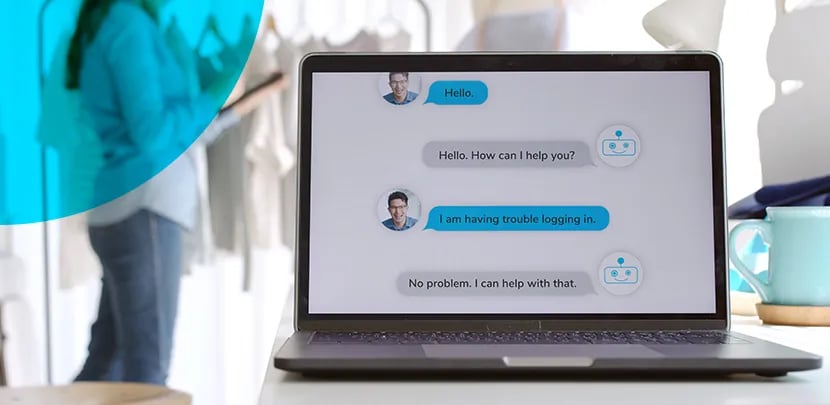Customer retention strategies and overall customer satisfaction often equals revenue growth. A happy customer is a returning customer, after all. That happiness with your business is built from the solid foundations of customer experience, but sometimes it doesn't always work out as you intend. Sometimes, the customer experience goes askew, and it can seem impossible to claw your way back into a customer's good graces.
If you're using the Net Promoter Score (NPS) methodology, you'll be familiar with the most at-risk customers (MARCs) concept. These are customers who are unhappy with the experience they've had with your business and are likely to churn. It is important to manage these customers to find resolutions to their problems, and despite their negative customer feedback, your MARCs are vital to improving your business, and should never be overlooked. Moreover, if you manage these at-risk customers well, there is a strong possibility you'll not only keep them as a customer but turn them into an advocate for your business.
With this in mind, here are our best tips for turning angry customers into smiling ones and hopefully retain them in the long term. Equally, these strategies also help reengage disengaged employees.
Related content: Customer experience game changes that grow revenue

5 steps for dealing with angry customers
1. Listen and understand
When it comes to listening to customer complaints, understand first, console second. Simply hearing them out can usually ease the pain. Most customers are looking for acknowledgement, and showing genuine compassion and empathy goes a long way.
Important! Always thank them for their time, their feedback and their honesty.
Tip: Do you have a system in place to measure the sentiment—the key themes identified in your NPS survey—of your customers? If not, this is something worth considering. This information is hugely useful for creating long-term retention strategies and reducing customer churn. Keeping your existing customers loyal is more cost efficient than acquiring new customers. The stats say it all: a 5 per cent lift in customer retention can result in a profit increase as high as 95 per cent!
2. Keep it natural
When you get in touch with an unhappy customer, keep the conversation natural, rather than scripted. Following a cookie-cutter script for every phone call is a sure-fire way to irritate your unhappy customer even further. If you have a script, it should serve as a reference, not a document to recite word-for-word.
Tip: Don’t over promise when you talk through the customer's pain points. For example, don't promise you’ll implement changes to fix an issue next week before knowing how long it will really take to resolve.
Read: The 3 C's of dealing with customer complaints
3. What does the customer want?
After listening, ask, “What can I do for you?”. Getting to the point of what they’re actually after will keep the interaction short and sweet.
Do they want a refund or exchange? Maybe it’s a genuine apology or simply to be heard? Understanding exactly what your customers are after will help you to respond in a relevant way so that they feel well taken care of.
Once you understand, do everything in your power to give it to them as quickly as possible. If it’s not possible, suggest an alternative solution or refer them to someone who can help.
4. What’s the impact?
What’s the scale of the potential impact? It's important to consider that a customer complaint isn't always necessarily in line with the impact of the trespass they've endured. That doesn't mean dismissing the customer's feelings. Remember, while this may seem small to you, it will almost certainly be a big problem for them.
All complaints should be approached with equal attention, but naturally, some will have a much greater impact than others. Make sure you identify the biggest threats and prioritise your resources accordingly.
When you have a clear understanding of the issues, be prepared to handle the problem. Understanding what customers complain about and planning for this in advance will help you identify the gravity of a complaint and the strategic course of action needed to correct it. This helps with settling future responses to complaints in a much quicker fashion.
5. Be quick to respond
When it comes to customer complaints, responding quickly is crucial. Many companies still operate with a 24 or even 48-hour response time. If someone has to wait for that long to get a response out of you, chances are they will take their business elsewhere.
This is especially important when considering social media, as that’s where most customers take their complaints these days. Businesses don't seem to realise how important speed in response is: only 32 per cent of those complaining on social media were happy with how fast the business involved responded.
The problem with this is that any issues can spread instantly and you really want to avoid negative talk about your brand spreading. To counteract this, you’ll need a solid social media strategy that supports regular monitoring and responding to complaints.
Read: 4 tips for prioritising your customers with Net Promoter Score
6. Keep track of your MARCs in the process
Keep tabs on what stage your MARCs are at. Are they waiting contact? Have they been contacted but not responded? Are they resolved? This is particularly important if more than one person is contacting your MARCs.
We recommend working in a team to contact MARCs. Depending on the issue, you team can determine what action (if any) needs to be taken, and if any escalation is needed (i.e. liaising with another department or manager).
Tip: You might opt to use KPIs for your team to monitor their progress. If so, your KPIs should be a balance between NPS score improvement and volume resolutions. You may also choose to include speed of response as well.
7. Learn from feedback
The truth is, you can learn the most from where it hurts the most. This is why complaining customers are actually a good thing.
According to one study, only 1 in 25 unhappy customers will complain directly to a company, the rest simply churn.
Listening to the feedback and learning from it is the only way you can make sure you improve your business. And finally, always thank them for their feedback and be grateful for them being honest.
Final thoughts
There’s no getting away from uphappy customers; they are part and parcel of doing business. However, instead of looking at unhappy and complaining customers in a negative light, see them as an opportunity to learn, grow and improve your business, from its products to your processes, operations, customer service, and more.
We hope these tips will help your team get to grips with making the most of customer feedback—diffusing tense situations, resolving issues, and ultimately learning from the entire experience.
Good luck!
How do you know the true value of customer service? Read our guide below to find out.
